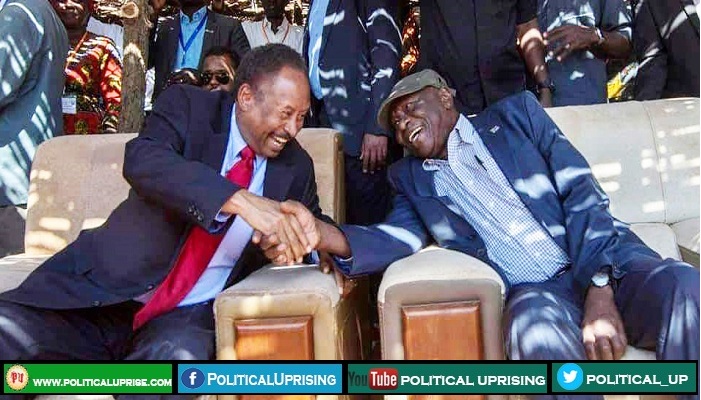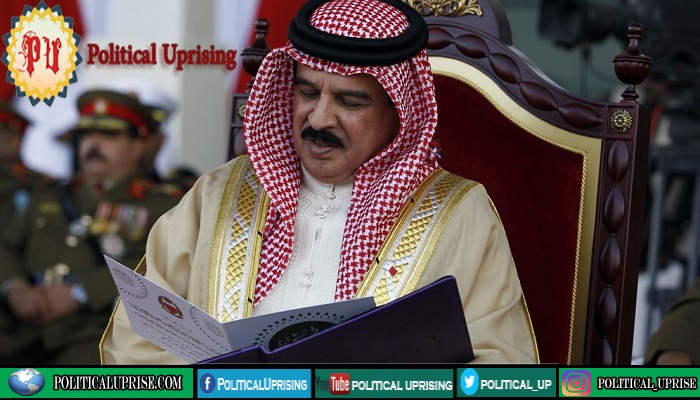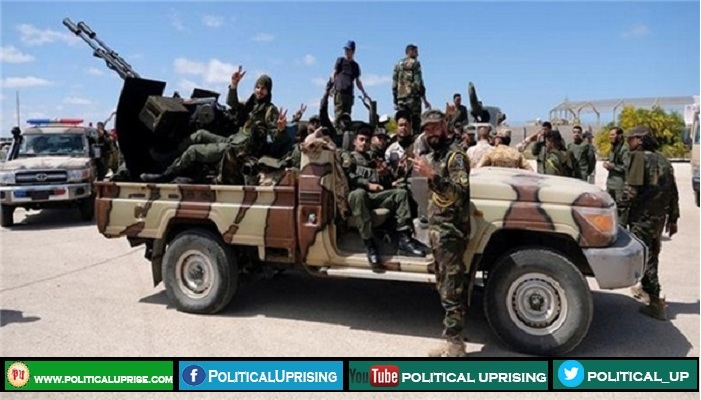Hamdok makes first visit to rebel stronghold Kauda as Prime Minister of Sudan which has raised hope for peace in the country.
Prime Minister Abdalla Hamdok makes first visit to conflict-ridden South Kordofan state in nearly a decade.
For nearly nine years, people in rebel-held Kauda in Sudan’s South Kordofan state have been monitoring the skies for the planes coming from capital Khartoum.
The residents in Kauda watched the movement of aircraft to warn others of either the government’s surveillance or dropping of bombs in the conflict-ridden area.
But for the first time since the war broke out in 2011, three planes from Khartoum landed in Kauda on Thursday, carrying representatives from Sudan’s months-old transitional government led by Prime Minister Abdalla Hamdok as well as diplomats and representatives from humanitarian organisations.
Read More:
- Doctors,teachers and lawyers joins France Strike
- Pakistan “will never get involved” in other countries’ wars,PM Imran
- Austria’s Green party to pay high price for it coalition with conservative
- Iran launches ballistic missiles targeting US presence in Iraq
- UK moves closer to leaving European Union
- Asylum seekers will be send to Guatemala under US new plan
- Pentagon rejects US president’s threat to target Iranian cultural sites
- British ex-foreign ministers warns of ‘wider consequences’ in Soleimani killing
“After all the bombardments that used to come from planes in the sky, this is a big change to see planes coming with a government delegation pushing for peace,” Analyst said.
Ibrahim was among tens of thousands of people who gathered at a square near the airstrip in Kauda to welcome the delegation. “It’s the first time a plane comes for something good in so many years,” he added.
Kauda, nicknamed “the fortified place” for being surrounded by the Nuba mountains, is a stronghold of the rebel Sudan’s People Liberation Movement-North (SPLM-N) led by Abdelaziz al-Hilu.
The group was born out of SPLM, which led a war against the Sudanese government from 1983 to 2005, making it one of the longest continuing civil wars in Africa.
The movement was mostly made up of fighters from the south, but also included soldiers from South Kordofan and Blue Nile states.
In 2005, when SPLM signed a peace deal with the Sudanese government, South Kordofan and Blue Nile were termed as “the two areas”.
While southern Sudan, which gained a semi-autonomous status following the deal, was granted right to a referendum to decide whether it wanted independence, the two areas were granted “popular consultation”.
The deal did not clearly define how the popular consultation would take place and who was eligible to join it.
While fighters from the two areas fought for the southern side during the civil war, the areas also had a large population that supported the northern government.
Tensions reached a peak in 2010 during the national and gubernatorial elections. Al-Hilu, who ran for governorship on an SPLM ticket, accused Ahmed Haroun, the then incumbent governor, of rigging the votes in his favour.
Haroun is accused by the International Criminal Court of war crimes and crimes against humanity in the western region of Darfur.
South Sudan voted for independence in 2011 according to the 2005 deal, but the Sudanese government showed no signs of wanting to define what “popular consultation” was or if the two areas would get the chance to hold it.
Al-Hilu announced his rebellion in June that year, a month before South Sudan officially seceded.
The Sudanese government responded to the rebellion with indiscriminate aerial bombardment and shelling.
“Wipe them off, sweep them,” Haroun said in a video two months after the war started. “Don’t bring them back to us alive.”
The exact death toll from the war in South Kordofan is not known as Sudan’s government under longtime ruler Omar al-Bashir blocked medical and humanitarian aid in areas controlled by the SPLM-N.
More than 100,000 people have been displaced, with most of them seeking shelter in camps in neighbouring South Sudan.
Despite on and off declarations of ceasefire and peace talks between the two sides in the Ethiopian capital Addis Ababa, the area remains closed off to aid, except under cover through neighbouring South Sudan.
The tide changed in October last year when, for the first time in more than eight years, the World Food Programme (WFP) chief David Beasley officially landed in Kauda after holding talks with Hamdok, who assumed power in August following months of turmoil that started with protests in December 2018 and eventually led to the military overthrow of President al-Bashir and his government in April.
“The first priority of this government is peace,” Hamdok had said in August, days after a power-sharing agreement between the military that overthrew al-Bashir and leaders of the protest movement was signed.
As a sign of goodwill, the new transitional government allowed the WFP chief to return to a rebel-held territory in December, this time to Yabous in Blue Nile which is also controlled by.
Thursday was the 15th anniversary of the 2005 peace deal.
Hamdok also seemed to agree that the trip to rebel-held Kauda was a step in the long road to ending the conflict as talks between the transitional government and armed groups continue in South Sudan’s capital, Juba.
“There is a proliferation of armed groups but I think our peace architecture will respond to that in a very positive way,” Hamdok said, identifying five pillars of peace, Economic and social development, addressing root causes of conflict, marginalisation and even development, security reforms, and issues of legal and transitional justice.
The war in Kauda, like in many other parts of Sudan, has left it with poor infrastructure. There are no tarmac roads and hospitals rely on aid.
Hamdok makes first visit to rebel-held Kauda as Prime Minister of Sudan.



